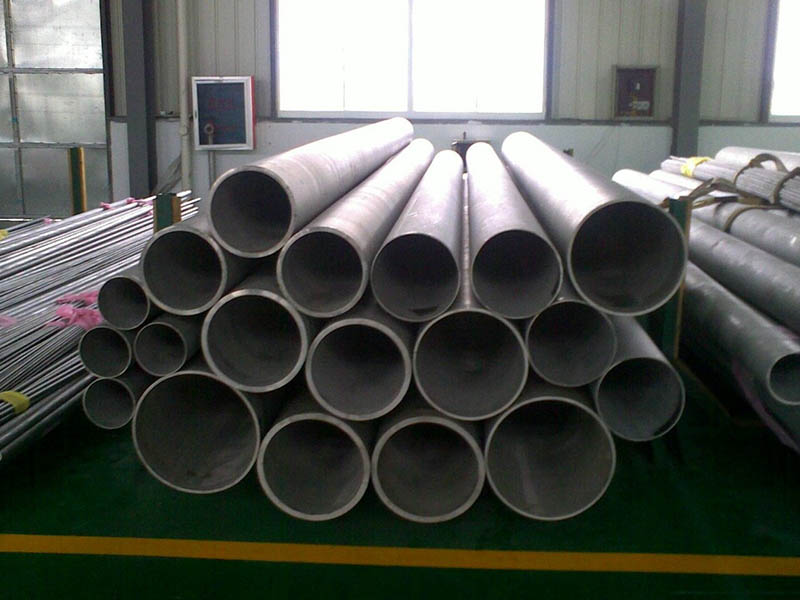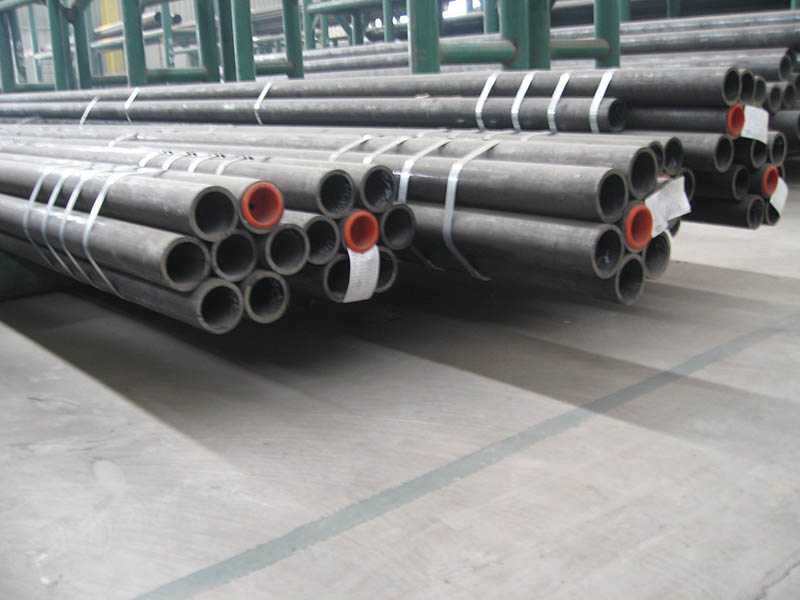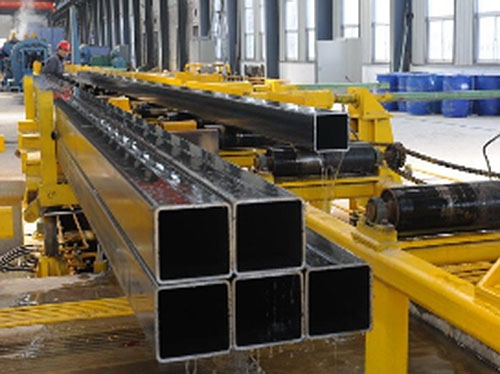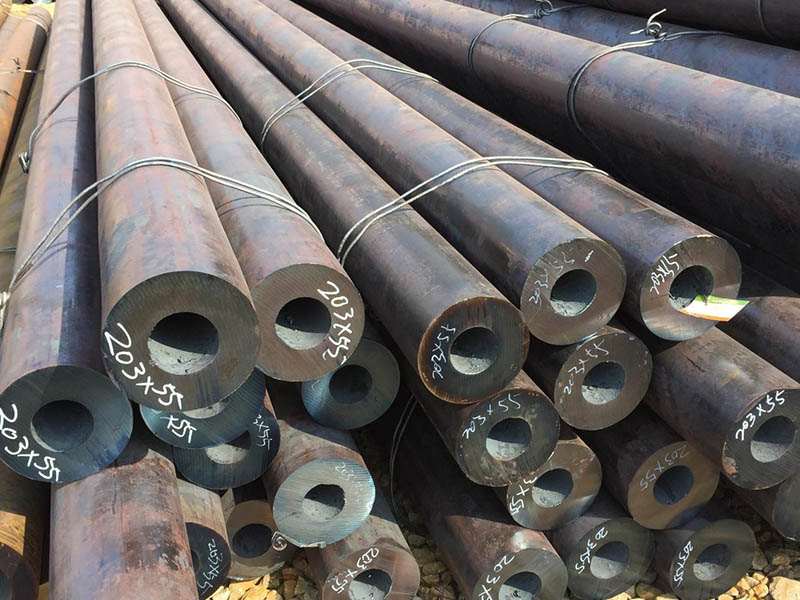OEM Supply S32205 Stainless Steel Pipe - Various specifications of stainless steel in stock – Weichuan
OEM Supply S32205 Stainless Steel Pipe - Various specifications of stainless steel in stock – Weichuan Detail:
The process of the product determines its limited performance. Generally, the precision of seamless steel pipe is low: uneven wall thickness, low brightness on the inner and outer surface of the pipe, high sizing cost, and pockmarks and black spots on the inner and outer surface are not easy to remove; Its detection and shaping must be processed offline. Therefore, it embodies its advantages in high pressure, high strength and mechanical structure materials.
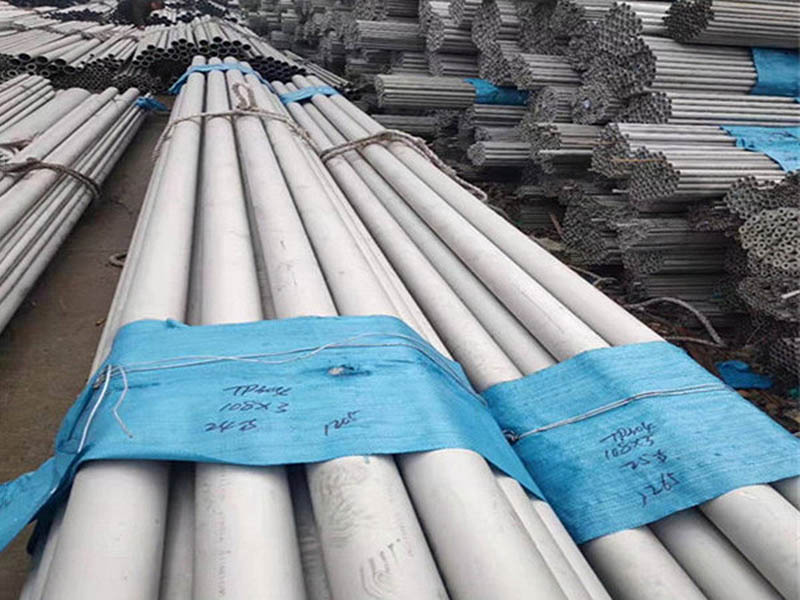
According to the metallographic structure of stainless steel, it is divided into semi Ferritic and semi martensitic stainless steel seamless pipe, martensitic stainless steel seamless pipe, austenitic stainless steel seamless pipe, austenitic ferritic stainless steel seamless pipe, etc.
A. According to gb14975-2002 stainless steel seamless steel pipe, the length of steel pipe is usually 1.5 ~ 10m for hot rolled steel pipe (indefinite length), and 1m for hot extruded steel pipe. 1.0 ~ 7m for cold drawn (rolled) steel pipe with wall thickness of 0.5 ~ 1.0mm; If the wall thickness is greater than 1.0mm, 1.5 ~ 8m.
B. There are 45 kinds of hot rolled (hot extruded) steel pipes with diameters of 54 ~ 480mm; There are 36 kinds with wall thickness of 4.5 ~ 45mm. There are 65 kinds of cold drawn (rolled) steel pipes with a diameter of 6 ~ 200mm; There are 39 species with wall thickness of 0.5 ~ 21mm.
C. The inner and outer surfaces of steel pipes shall be free of cracks, folds, crazing, cracks, rolling folds, delaminations and scabs. These defects shall be completely removed (except for pipes for machining). After removal, the wall thickness and outer diameter shall not exceed the negative deviation. Other minor surface defects that do not exceed the allowable negative deviation may not be removed.
D. Allowable depth of straight. Hot rolled and hot extruded steel pipes with diameter less than or equal to 140mm shall not be greater than 5% of the nominal wall thickness, and the maximum depth shall not be greater than 0.5mm; Cold drawn (rolled) steel pipe shall not be greater than 4% of nominal wall thickness, and the maximum depth shall not be greater than 0.3mm.
E. Both ends of the steel pipe shall be cut into right angles and burrs shall be removed.
According to the metallographic structure of stainless steel, it is divided into semi Ferritic and semi martensitic stainless steel seamless pipe, martensitic stainless steel seamless pipe, austenitic stainless steel seamless pipe, austenitic ferritic stainless steel seamless pipe, etc.
1. Hot rolled (extruded seamless steel pipe): round tube blank → heating → perforation → three roll cross rolling, continuous rolling or extrusion → pipe stripping → sizing (or reducing) → cooling → straightening → hydrostatic test (or flaw detection) → marking → warehousing
The raw material for rolling seamless tube is round tube blank. The round tube blank shall be cut and processed by the cutter, and the blank with a growth of about 1m shall be sent to the furnace for heating through the conveyor belt. The billet is sent to the furnace for heating at a temperature of about 1200 degrees Celsius. The fuel is hydrogen or acetylene. The temperature control in the furnace is the key problem. After the round tube billet is discharged from the furnace, it should be pierced through the pressure piercer. Generally, the more common piercer is the conical roll piercer. This piercer has high production efficiency, good product quality, large perforation expansion and can wear a variety of steel grades. After perforation, the round tube blank is successively rolled by three roll cross rolling, continuous rolling or extrusion. After extrusion, take off the pipe for sizing. The sizing machine rotates into the steel embryo at high speed through the conical drill to form a steel pipe. The inner diameter of the steel pipe is determined by the outer diameter length of the sizing machine bit. After sizing, the steel pipe enters the cooling tower and is cooled by water spray. After cooling, the steel pipe will be straightened. After straightening, the steel pipe is sent to the metal flaw detector (or hydrostatic test) by the conveyor belt for internal flaw detection. If there are cracks, bubbles and other problems inside the steel pipe, they will be detected. Steel pipes should be strictly selected by hand after quality inspection. After the steel pipe is inspected, the number, specification, production batch number, etc. shall be sprayed with paint. And hoisted into the warehouse by crane.
2. Cold drawn (rolled) seamless steel pipe: round tube blank → heating → perforation → heading → annealing → pickling → oiling (copper plating) → multi pass cold drawing (cold rolling) → blank tube → heat treatment → straightening → hydrostatic test (flaw detection) → marking → warehousing.
The rolling method of cold drawn (rolled) seamless steel pipe is more complex than that of hot rolled (extruded) seamless steel pipe. The first three steps of their production process are basically the same. The difference starts from the fourth step. After the round tube blank is emptied, it needs to be started and annealed. After annealing, special acid liquid shall be used for pickling. After pickling, apply oil. Then it is followed by multi pass cold drawing (cold rolling) and special heat treatment. After heat treatment, it will be straightened.
According to different production methods, it can be divided into hot rolled pipe, cold rolled pipe, cold drawn pipe, extruded pipe, etc.
1.1. Hot rolled stainless steel seamless pipe is generally produced on automatic pipe rolling mill. After inspection and removal of surface defects, the solid pipe blank is cut into the required length, centered on the end face of the perforated end of the pipe blank, and then sent to the heating furnace for heating and perforated on the piercer. During perforation, it rotates and advances continuously. Under the action of roll and plug, a cavity is gradually formed inside the pipe blank, which is called rough pipe. Then it is sent to the automatic pipe mill to continue rolling. Finally, the wall thickness is adjusted by the whole machine, and the diameter is determined by the sizing machine to meet the specification requirements. It is an advanced method to produce hot rolled seamless steel pipe by continuous pipe mill.
1.2. If you want to obtain seamless pipes with smaller size and better quality, you must use cold rolling, cold drawing or a combination of both. Cold rolling is usually carried out on a two high mill. The steel pipe is rolled in an annular pass composed of variable section circular groove and fixed conical plug. Cold drawing is usually carried out on a single chain or double chain cold drawing machine of 0.5 ~ 100t.
1.3. Extrusion method means that the heated tube blank is placed in a closed extrusion cylinder, and the perforated rod moves together with the extrusion rod to extrude the extrusion part from the smaller die hole. This method can produce steel pipes with smaller diameter.
This kind of steel pipe can be divided into stainless steel seamless steel pipe and stainless steel welded steel pipe (slotted pipe), which can be manufactured according to different manufacturing processes
These basic types are: hot rolling, extrusion, cold drawing and cold rolling. According to the section shape, they can be divided into circular pipe and special-shaped pipe. Circular steel pipe is widely used, but there are also some special-shaped stainless steel pipes such as square, rectangular, semicircular, hexagonal, equilateral triangle and octagonal.
Hydraulic test shall be conducted for the steel pipe bearing fluid pressure to test its pressure resistance and quality. It is qualified if there is no leakage, wetting or expansion under the specified pressure. Some steel pipes shall also be subject to crimping test, flaring test and flattening test according to the standard or the requirements of the demander.
Seamless stainless steel pipe, also known as stainless steel seamless pipe, is made of steel ingot or solid pipe blank through perforation, and then made by hot rolling, cold rolling or cold drawing. The specification of seamless steel pipe is expressed in mm of outer diameter * wall thickness
According to the metallographic structure of stainless steel, it is divided into semi Ferritic and semi martensitic stainless steel seamless pipe, martensitic stainless steel seamless pipe, austenitic stainless steel seamless pipe, austenitic ferritic stainless steel seamless pipe, etc.
Product detail pictures:

Related Product Guide:
We support our prospective buyers with ideal top quality merchandise and superior level provider. Becoming the specialist manufacturer in this sector, we have now attained abundant practical expertise in producing and managing for OEM Supply S32205 Stainless Steel Pipe - Various specifications of stainless steel in stock – Weichuan, The product will supply to all over the world, such as: Finland, California, Naples, Facing fierce global market competition, we have launched the brand building strategy and updated the spirit of "human-oriented and faithful service", with an aim to gain global recognition and sustainable development.
The factory technical staff not only have high level of technology, their English level is also very good, this is a great help to technology communication.

